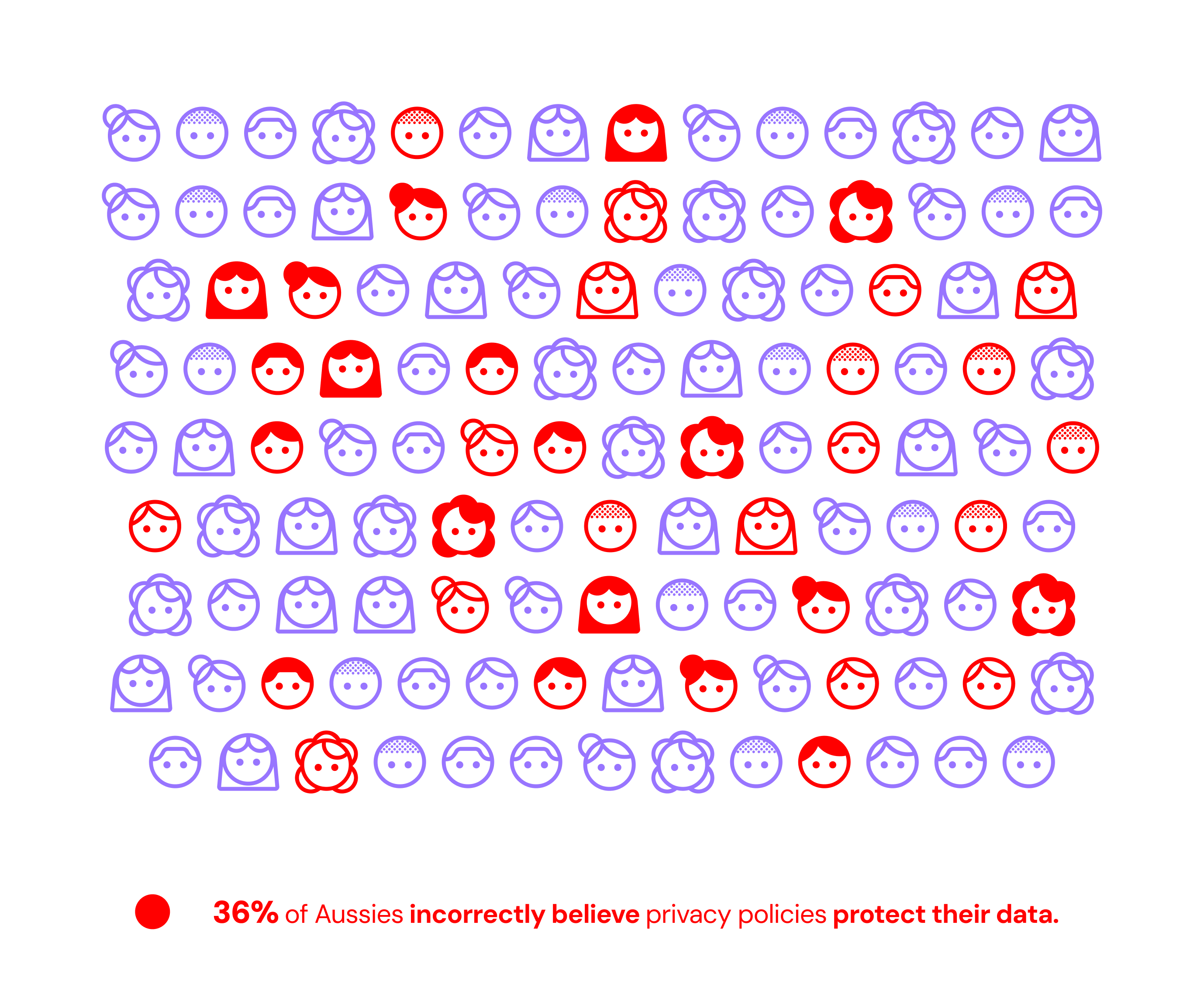

It’s the common misconception that could be putting your personal data at risk – many Australians believe a privacy policy is designed to protect their information. However, a closer look reveals a different reality.

A 2019 inquiry by the Australian Competition and Consumer Commission (ACCC) found that 36% of Australians on digital media platforms don’t actually know what a privacy policy is. This lack of awareness reveals a fundamental gap in understanding how our personal information is being collected, stored, used, and shared across the web.

So, what exactly is a privacy policy?
A privacy policy isn’t a shield or statement that guarantees the protection of your personal data. Instead, privacy policies are a legal document that outline how a company collects, stores, and processes your data (OAIC, 2025). It also states how your data is distributed to third parties.
According to the ACCC (2019):
❌ False
When a digital platform has a privacy policy, it means it will not share my personal information with anyone else (including other digital platforms)
✅ True
A privacy policy means the user has relinquished their control over their personal information and user data to the extent outlined in that privacy policy
When you “agree” to a privacy, you agree to how the service uses your data in accordance with their privacy policy.
You should contact a business directly if you don’t understand their privacy policy.
When you “agree” to a privacy, you agree to how the service uses your data in accordance with their privacy policy.
What a privacy policy actually includes.
The Office of the Australian Information Commissioner (OAIC) outlines various key elements that a privacy policy must contain. Here’s the gist of it:
An outline of the data that the platform collects
Here, the platform shows the data that is being gathered, which can be anything from your name to your browsing history, location data, and contacts.
Learn how to reduce the amount of data you share while keeping your Reels, Shorts and TikToks rolling.How the platform will use & disclose your data
“Using” your data refers to the platform’s internal activities, like feeding your data into content algorithms to personalise your feed.
“Disclosing” your data refers to how the platform shares your data with third parties like targeted marketing
An outline of the data that the platform collects
Here, the platform gives reasons behind data collection. I.e., a platform might state that they need your data for the “development of an advertising ID” to serve you more relevant ads.
How you can access your personal info
These are the steps that you can take to request your personal information from the platform.
Privacy policy vs. Terms & Conditions
Oftentimes, when you sign up for a service, you’re agreeing to both their terms & conditions and their privacy policy. These are two fundamentally different documents and confusing them can cause significant misunderstandings about your rights and obligations (Talip, 2022)
A privacy policy outlines how a platform collects, uses, stores, and shares your personal information. In Australia, platforms are required by law to have a privacy policy.
Terms & conditions set out the rules, expectations, and guidelines for using a platform. Platforms are not required by law to have a terms & conditions statement.
It’s tempting to skip reading the privacy policy and just go straight to the service, but it’s important to know what exactly you’re allowing a platform to do with your personal data. Oftentimes, the extent of data collection and processing can appear excessive or alarming.
But it’s not all bad news – if you really want to keep using a platform, see our guide on limiting the amount of data you share with big tech.
Related content
Scary statistics don't fix the problem; they make it worse
Trying to scare people into reducing their social media activity might have an opposite, unintended effect.
The Invisible Hand: How your online data is actually collected
We all know that digital platforms collect our data, but how do they know it's you?